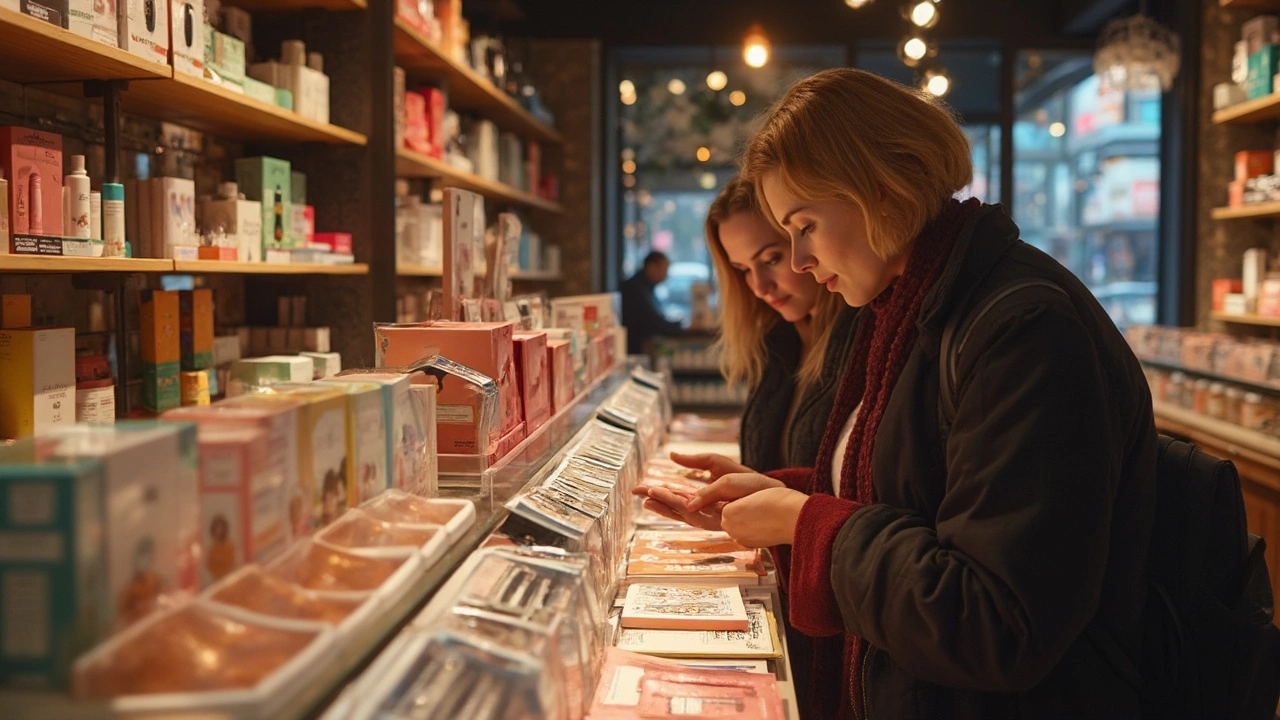
Remember when Birchbox seemed to be everywhere? Back in its heyday, it was the talk among beauty lovers who couldn't wait to discover what samples would arrive next. But now, it feels like the buzz has dulled. What happened?
Birchbox started strong because it had a simple yet brilliant idea: personalized beauty samples sent straight to your door. For anyone who loved trying new things without the full-size commitment, it was a dream service. But the landscape of the beauty industry is ever-changing, and new challenges cropped up.
A big part of the story involves the fierce competition that popped up. More and more companies wanted a slice of the subscription box pie, each offering something unique, which made it harder for any single player to stand out. Also, internal kinks like logistical snags and customer service mishaps didn't help Birchbox's case.
- The Rise of Birchbox
- Challenges Faced by Birchbox
- The Impact of Competition
- Operational Hurdles
- Lessons for Other Subscription Boxes
- Tips for Choosing a Subscription Box Today
The Rise of Birchbox
Back in 2010, Birchbox was like a breath of fresh air to the beauty industry. It all started when two Harvard grads, Katia Beauchamp and Hayley Barna, got a bright idea: create a service where beauty lovers could explore new products without committing to full-sized bottles.
Why did it become such a hit? Imagine being able to try out the latest skincare or makeup trends every month just in a box. It was innovation at its finest. Birchbox pretty much pioneered the beauty subscription box model, which sparked off in various niches later. They were dabbling in a goldmine of customization and exploration, which clearly struck a chord with beauty enthusiasts.
Even back then, beauty shopping was heading online at full throttle, but people missed the personal touch. Birchbox closed that gap by delivering tailored samples right to your door. It wasn't just a convenience—it was like opening a surprise gift each month.
Birchbox's Initial Success
Their growth was fast and furious. Within just five years, Birchbox expanded to the UK, France, Spain, and Belgium, reaching millions of subscribers. Their partnerships with major beauty brands gave subscribers access to top-notch products. Those were big wins!
Driving Factors
- Innovation and Personalization: Birchbox offered highly-targeted personalization, letting customers enjoy a handpicked experience that felt special.
- Word of Mouth Marketing: Influencers and customers spread the word fast. In an era where social media was gaining steam, this organic marketing gave Birchbox a huge push.
In short, by understanding the shift in consumer desires and recognizing the power of surprise and discovery, Birchbox became an industry frontrunner. Who knew a little box could pack so much magic?
Challenges Faced by Birchbox
Birchbox didn't always have a smooth ride. A mix of external pressures and internal hiccups threw a wrench into their operations.
Overcrowded Market
One big issue was the splurge of competitors. In the world of beauty subscription boxes, Birchbox was no longer the lone star. Rivals like Ipsy and Glossybox emerged, each with their special twist. Birchbox's uniqueness started to blur. Suddenly, the choice was overwhelming for customers, making it tricky for one box to shine.
Operational Struggles
Then there were the behind-the-scenes problems. Reports surfaced of deliveries getting delayed and customer service slipping. The magic of receiving a surprise package lost its charm when it arrived late or with missing samples. These operational stumbles dented trust, and some subscribers decided it wasn't worth the hassle.
Financial Hurdles
Money woes affected Birchbox, too. Running a business isn't cheap, and balancing costs with customer satisfaction is always a juggle. In 2018, Birchbox had to slim down its staff, aiming to cut costs while continuing to deliver quality. Such moves often send mixed signals, raising concerns about stability.
Birchbox serves as a reminder of how quickly the beauty industry evolves. Even a strong start can face tumbling blocks if you're not ready to adapt to changing tides and challenges.
The Impact of Competition
It’s no secret that when Birchbox first made waves, they really owned the beauty subscription boxes space. But like all things in demand, competition was bound to show up. And boy, did it ever!
Think about it—every other day seemed to bring a new box offering a different twist, whether it was cruelty-free, vegan, or themed around K-beauty. Companies like Ipsy and GlossyBox became notable challengers. And let's not forget about the rise of BoxyCharm with its full-sized products. These fresh competitors offered their own perks, and for some beauty enthusiasts, variety truly was the spice of life.
"The competition in the beauty box market is a reflection of consumer interest in trying new products in a personalized and convenient manner," said Louise Green, a market analyst at Beauty Research Group.
To understand why customers may have left Birchbox, it helps to look at what the others were doing better. Value seems to be a driving factor. Some boxes started including full-size products or guaranteed a specific number of items which made consumers feel like they were getting more bang for their buck.
Comparing Offerings
Let’s break it down:
- Ipsy gives subscribers a chance to choose some items, tailoring the box even more closely to their tastes.
- BoxyCharm boasts full-size makeup and skincare, drawing interest from those who wanted to avoid minis.
- FabFitFun feeds into the lifestyle aspect, not just beauty, offering a mix of items ranging from wellness to fitness.
This uptick in options meant Birchbox had to fight to maintain its market share. As consumer expectations became more demanding, staying ahead required constant innovation and adaptation, which isn't always easy or affordable.

Operational Hurdles
Running a beauty box service like Birchbox isn't just about curating fabulous products. Behind the scenes, there’s a whole logistical dance going on, and any misstep can lead to a stumble. Birchbox experienced a few of these stumbles that, over time, began to add up.
One of the key challenges was managing the supply chain. Securing all those different beauty samples, getting them on time, and dealing with unexpected hiccups from suppliers can be a nightmare. Birchbox sometimes faced delays, and those delays meant unhappy customers waiting longer than expected for their monthly dose of excitement.
Customer Service Woes
No matter how cool your brand or products are, customer service is where the rubber hits the road. For Birchbox, there were growing pains as the company scaled. More subscribers meant a bigger demand for customer support, and any perceived shortcomings in response times or issue resolution didn't go unnoticed by users.
Changing Customer Expectations
It wasn't just about logistic issues. As the service evolved, so did its subscriber base. Customers began expecting more customization options, exclusive products, and seamless experiences, pushing companies like Birchbox to continuously innovate within tight margins. Meeting these evolving expectations was no small task, especially for a company balancing growth and operational efficiency.
Operational hurdles like these show how critical behind-the-scenes work is to maintaining the appeal of a service like a subscription box. If you're running—or considering starting—such a service, nailing down your logistics and customer service is crucial to staying afloat amid fierce competition.
Lessons for Other Subscription Boxes
When it comes to the world of beauty subscription boxes, Birchbox's journey offers several insights. While they nailed the personalization aspect early on, staying relevant in a rapidly growing market proved challenging. So, what can other boxes learn from this?
Stay True to Your Unique Value
The first lesson is simple: know your core appeal and stick to it. Customers were initially drawn to Birchbox for its curated sample experience. But with increased competition, maintaining a distinct value became more crucial than ever. Whether your strength is a specific theme, ingredient focus, or environmental impact, make sure it shines through everything you do.
Handle Growth Wisely
Rapid growth sounds exciting, but scaling quickly without a solid plan can mess things up. Birchbox expanded rapidly but navigating logistics and customer service was a hefty task. Learning from this, other subscription services should aim for sustainable growth. Plan capacity before growth surges to ensure quality and reliable service.
Keep Customers Engaged
- Spot trends early and adapt your offerings. If a product or trend is buzzing on social media, consider including a sample.
- Create loyalty programs or special deals for long-term subscribers to ensure retention.
- Encourage feedback. Listen to customers or conduct periodic surveys to refine box contents.
Embrace Digital Competence
Lastly, with the world turning more digital every day, having a robust online presence is crucial. Implementing user-friendly apps and engaging websites can enhance customer experience significantly. Plus, investing in top-notch analytics can help tailor packages and marketing strategies to what really clicks with your audience.
Tips for Choosing a Subscription Box Today
Thinking of jumping onto the beauty subscription boxes bandwagon? You've got options, and let's make sure you pick the right one for your needs. There's a lot more to consider now than when Birchbox first launched, and that's a good thing!
1. Know Your Preferences
First things first, know what you're looking for. Are you into skincare, makeup, or haircare? Maybe a mix of all three? Some boxes, like Ipsy, focus heavily on makeup, whereas others, like Dermstore BeautyFIX, are more about skincare. Identify your primary interest to avoid unwanted surprises.
2. Check the Brands Featured
Some boxes consistently offer luxury brands, while others concentrate on indie labels. Look for reviews or unboxing videos online to see if the brands featured match your style and quality expectations.
3. Budgeting Matters
Subscription boxes range from affordable to quite pricey. Decide how much you're willing to spend per month. If you're cautious with your budget, consider something like Sephora Play, which offers high-quality products without breaking the bank.
4. Look at Customer Reviews
Customer feedback can reveal a lot about how a company handles deliveries and customer service. Review sites or beauty forums often have discussions that might highlight recurring issues or points of excellence.
5. Subscription Flexibility
Life happens. Make sure the box you choose has flexible options like pausing or cancelling the subscription easily. Some boxes even offer one-time gift purchases, so you can test them out before committing.
6. Consider Box Customization
Like Birchbox in its prime, personalized experiences keep subscribers happy. Check if a box offers customization based on your beauty profile or preferences.
Once you’ve done your research, you'll certainly find a box that feels like it was made just for you, turning that monthly package arrival into a little moment of self-indulgence!